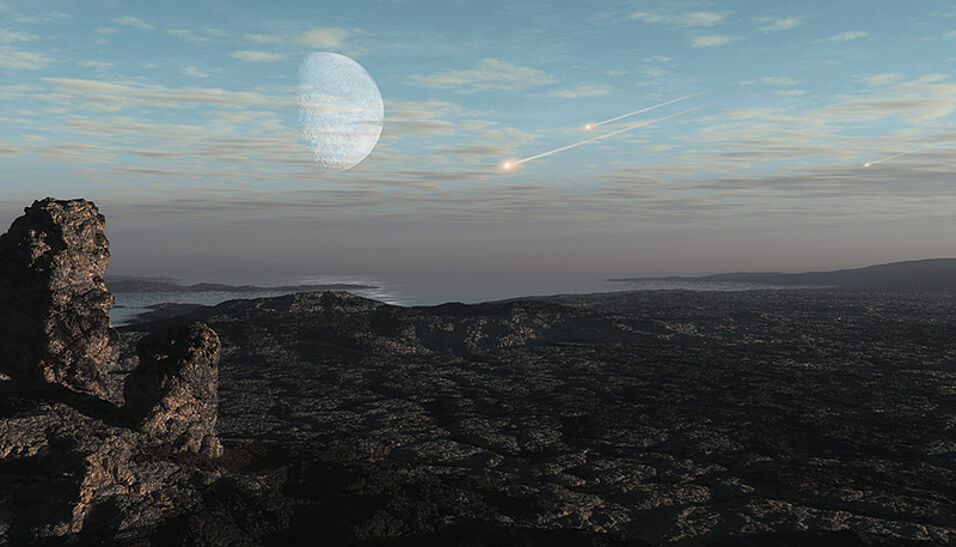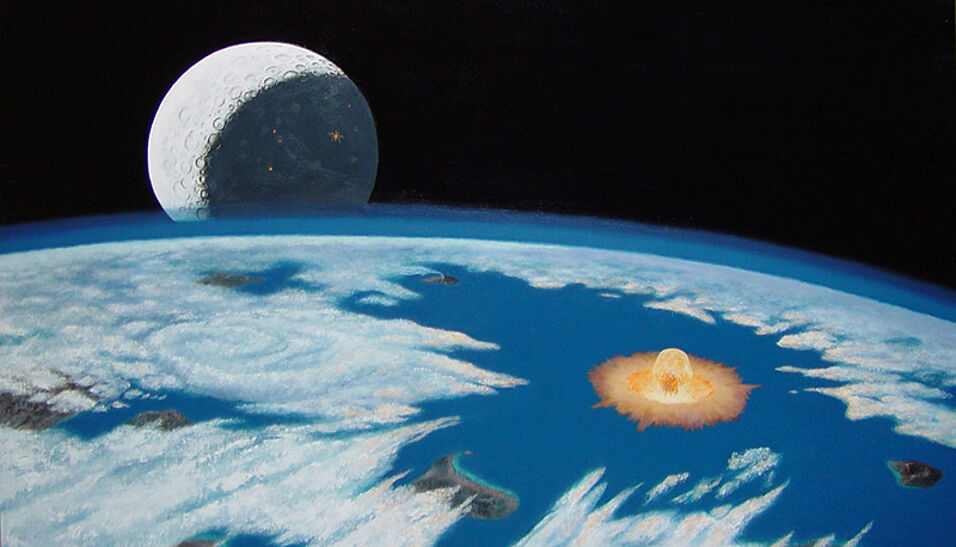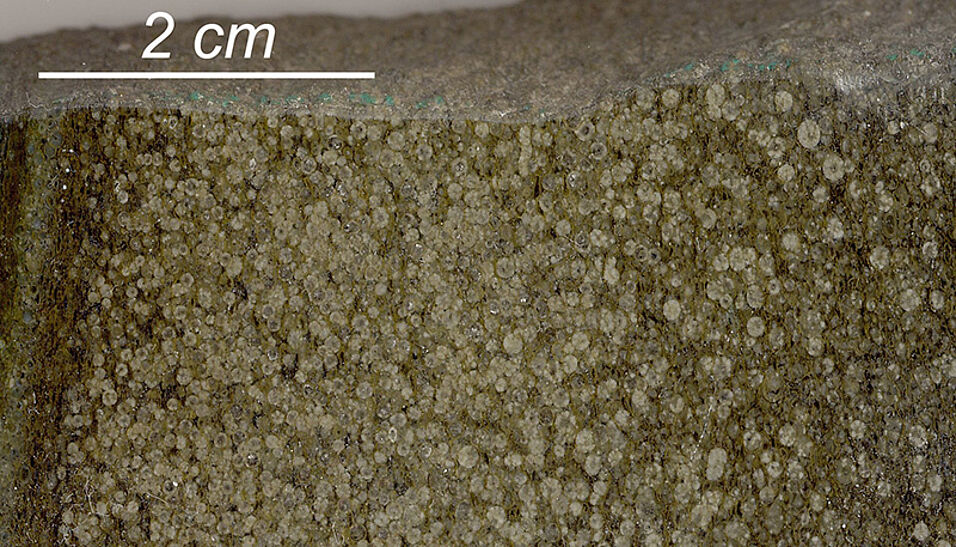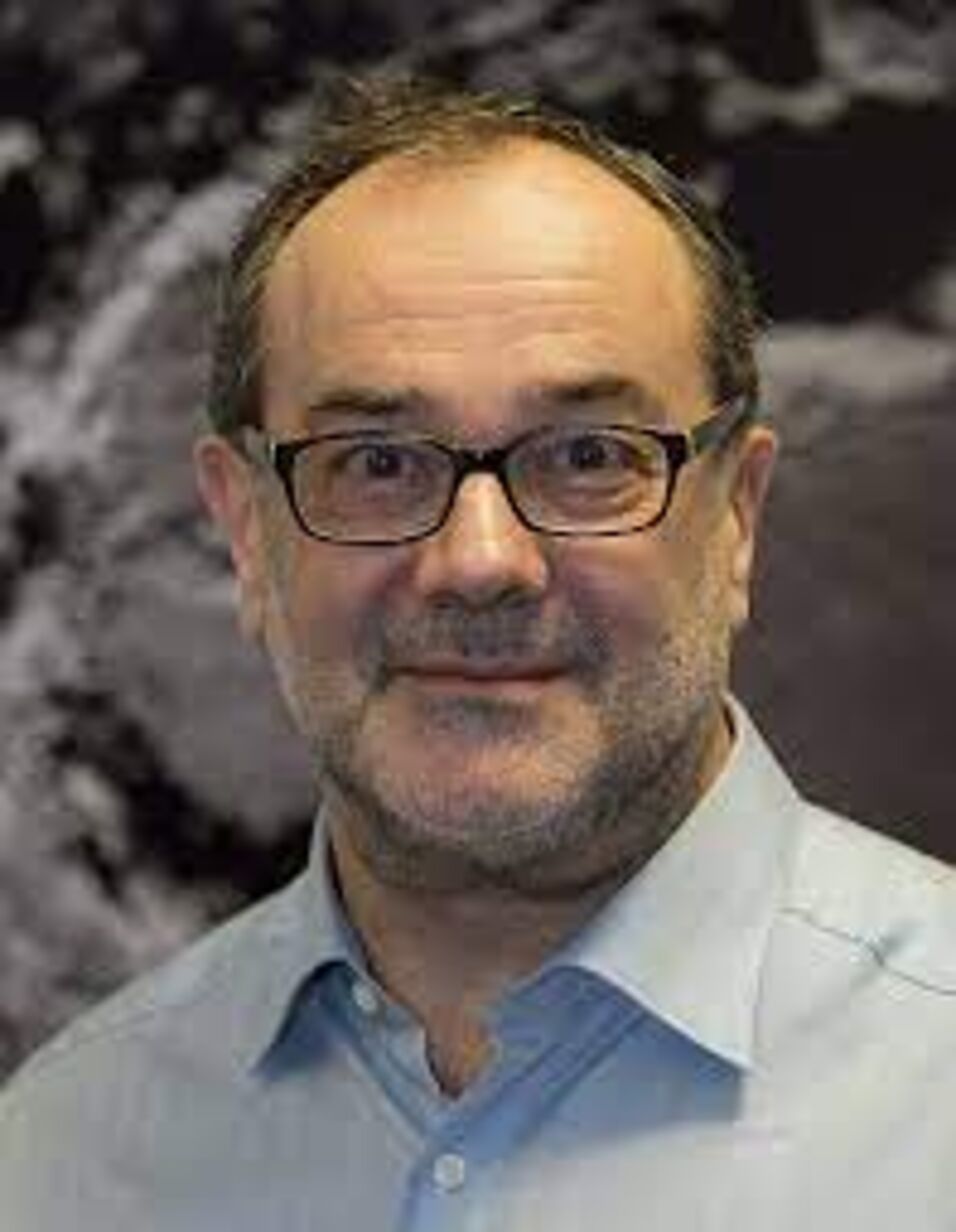Ein Forschungsteam unter Mitarbeit von Wissenschaftern der Universität Wien hat zusammen mit dem von Southwest Research Institute (Boulder, Colorado, USA) geleiteten Team ein Asteroiden-Bombardement-Modell der Erde mit den neuesten geologischen Beweisen für alte, große Kollisionen aktualisiert. Diese Modelle wurden verwendet, um zu verstehen, wie die Auswirkungen der Impakte den Sauerstoffgehalt der Erdatmosphäre im Archäikum vor 2,5 bis 4 Milliarden Jahren beeinflusst haben könnten.
Als große Asteroiden oder Kometen die frühe Erde trafen, wurde durch die enorme freigesetzte Energie Gesteinsmaterial der Erdkruste geschmolzen und verdampft. Die kleinen Tröpfchen aus geschmolzenem Gestein in der Auswurf-Wolke der Impakte kondensierten und verfestigten sich, bevor sie auf die Erde zurück fielen, wodurch runde, weltweit verteilte Teilchen in Millimetergröße erzeugt wurden. Diese glasigen Partikel, die als Impaktkügelchen bekannt sind, bildeten mehrere dünne, diskrete Schichten in der Erdkruste, deren Alter zwischen 2,4 und 3,5 Milliarden Jahre lag. Diese archaischen Kugelschichten sind Marker für solche frühen Impaktereignisse, die noch älter sind als die ältesten auf der Erde erhalten gebliebenen Einschlagskrater.
Neue Kügelchen-Schichten
Christian Köberl von der Universität Wien untersucht derartige Impaktablagerungen schon seit vielen Jahren. Da in den letzten Jahren in Bohrkernen und Aufschlüssen vor allem in Südafrika, aber auch in Australien, eine Reihe bisher noch nicht bekannter Kügelchenschichten identifiziert wurden, hat sich damit die Gesamtzahl der bekannten Einschlagsereignisse während der frühen Erde erhöht, wie Köberl erklärt. Er hat viele dieser Impaktablagerungen untersucht und gemeinsam mit Toni Schulz, ebenfalls vom Department für Lithosphärenforschung an der Universität Wien, vor allem isotopengeochemische Nachweise geführt, wieviele Impaktlagen es gibt – ein wesentlicher Beitrag zu der neuen Forschungsarbeit.
„Bisherige Bombardementmodelle unterschätzten die Anzahl der spätarchäischen Kugelschichten; unsere Arbeiten deuten darauf hin, dass der Impaktorfluss zu dieser Zeit bis zu zehnmal höher war als bis heute angenommen wurde“, sagte Dr. Simone Marchi vom SwRI, Hauptautor der Publikation zu diesen Forschungsarbeiten in der Fachzeitschrift „Nature Geoscience“. „Darüber hinaus stellen wir fest, dass die kumulative Impaktormasse, die der frühen Erde zugeführt wurde, eine Art Sauerstoffspeicher darstellt, was darauf hindeutet, dass ein frühes Bombardement die Oxidation der Erdatmosphäre verzögert haben könnte.“
Atmosphäre im Archaikum
Der Sauerstoffüberschuss in der Erdatmosphäre ist auf ein Gleichgewicht von Produktions- und Abbauprozessen zurückzuführen. Diese neuen Erkenntnisse entsprechen den geologischen Daten, die zeigen, dass der Sauerstoffgehalt in der Atmosphäre im frühen Archäischen Zeitalter zwar variierte, aber relativ niedrig blieb. Einschläge von Körpern mit einem Durchmesser von mehr als 10 km könnten zu dieser Sauerstoffknappheit beigetragen haben, da der wenige Sauerstoff in der Atmosphäre der frühen Erde durch die impaktbedingt freigesetzten Gase chemisch verbraucht worden wäre, was seine Häufigkeit in der Atmosphäre weiter verringert hätte.
Die spätarchäische Bombardierung mit Objekten mit einem Durchmesser von mehr als zehn Kilometern hätte genug reaktive Gase erzeugt, um einen geringen Luftsauerstoffgehalt vollständig zu verbrauchen. „Dieses Muster stimmt mit dem Nachweis des kurzfristigen Vorhandenseins geringer Sauerstoffmengen überein - ein relativ steiler, aber vorübergehender Anstieg des Luftsauerstoffs, der vor etwa 2,5 Milliarden Jahren auftrat. Wir glauben, dass dieser Anstieg durch Einschläge unterbrochen wurde, da diese der Atmosphäre den Sauerstoff wieder entzogen. Dies steht im Einklang mit sonstigen großen globalen Auswirkungen, die durch die damaligen Einschläge erfolgten“, sagt Köberl.
Viele Asteroiden trafen Erde
Die Ergebnisse der Studie zeigen, dass die Erde während der späten Archäischen Ära einer beträchtlichen Anzahl großer Asteroideneinschläge ausgesetzt war. Vor etwa 2,4 Milliarden Jahren, während des Endes dieser Bombardierung, durchlief die Erde eine große Veränderung in der Oberflächenzusammensetzung , die durch den Anstieg des Luftsauerstoffs ausgelöst wurde. Dieser Anstieg wird als Great Oxidation Event (GOE) bezeichnet und deutet auf Veränderungen in der Sauerstoffproduktion hin.
Zu den vorgeschlagenen Szenarien gehören eine vermutete Zunahme der Sauerstoffproduktion und eine Abnahme der Gase, die Sauerstoff entfernen können (entweder aus vulkanischen Quellen oder durch ihren allmählichen Verlust in den Weltraum). „Die bei den Einschlägen freigesetzten Gase verursachten für lange Zeiträume vor dem GOE episodisch niedrige Sauerstoffwerte“, sagte Marchi. „Im Laufe der Zeit werden Kollisionen immer seltener und zu klein, um den Sauerstoffgehalt nach der GOE signifikant ändern zu können. Die Erde war auf dem Weg, der heutige Planet zu werden.“




